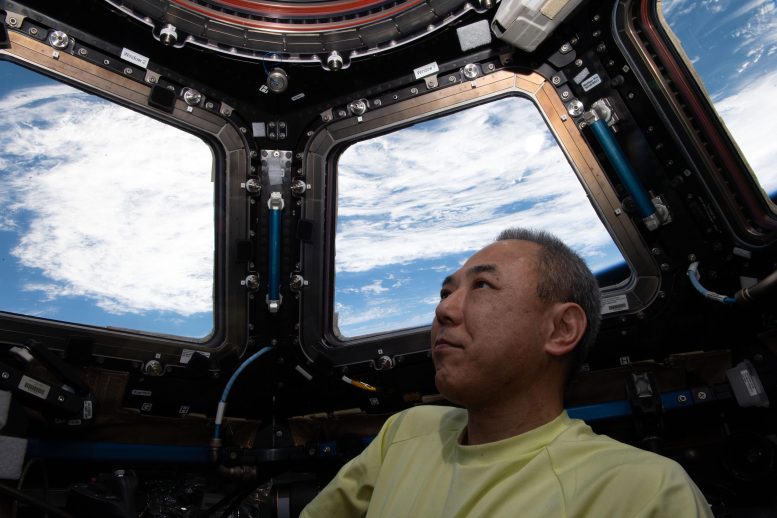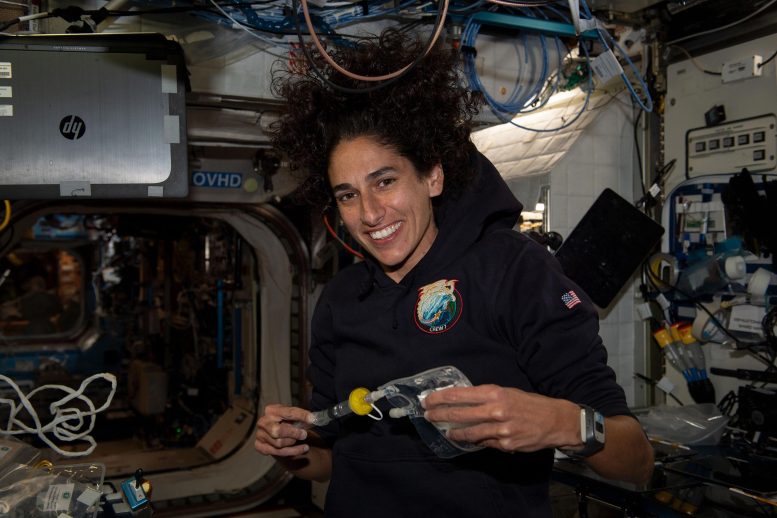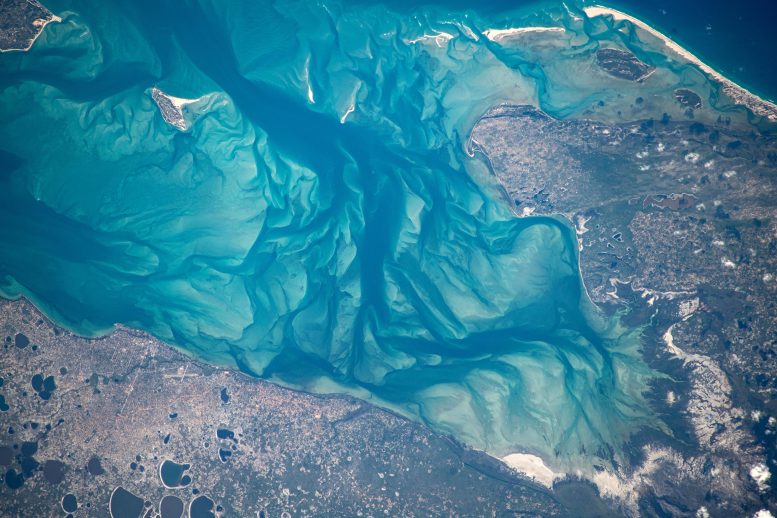
JAXA (Japan Aerospace Exploration Agency) astronaut and Expedition 70 Flight Engineer Satoshi Furukawa peers at the Earth from inside the International Space Station’s “window to the world,” also known as the cupola. The orbital lab was soaring 274 miles above the south Atlantic Ocean at the time of this photograph. Credit: NASA
Human research and space physics were the dominant science topics aboard the International Space Station (ISS) on Thursday. The Expedition 70 crew is also preparing for a U.S. cargo mission targeted to launch next week.
Medical Research in Orbit
NASA astronaut Jasmin Moghbeli and Roscosmos cosmonaut Konstantin Borisov took turns as crew medical officer on Thursday and performed eye scans of their crewmates using the Ultrasound 2 device. Moghbeli operated the device imaging the eyes of Commander Andreas Mogensen and Flight Engineer Satoshi Furukawa. Borisov also scanned Roscosmos Flight Engineer Nikolai Chub’s eyes. Doctors on the ground monitored and assisted the diagnostic exam in real-time. The ultrasound scanning procedure uses high-frequency soundwaves to observe how microgravity affects a crew member’s eye structure.

NASA astronaut and Expedition 70 Flight Engineer Jasmin Moghbeli collects water samples for microbial analysis inside the International Space Station’s Destiny laboratory module. Credit: NASA
Preparing for Cygnus Cargo Arrival
Afterward, Mogensen from ESA (European Space Agency) and Furukawa from JAXA (Japan Aerospace Exploration Agency) reviewed procedures planned for the Wednesday, January 31, arrival and capture of the Northrop Grumman Cygnus cargo craft. Moghbeli joined NASA Flight Engineer Loral O’Hara and practiced on a computer capturing Cygnus with the Canadarm2 robotic arm. The duo will be on duty Wednesday with Moghbeli at the controls of the Canadarm2 while O’Hara monitors the vehicle’s approach and rendezvous. Cygnus is counting down to a launch at 12:29 p.m. EST on Monday aboard a SpaceX Falcon 9 rocket from Kennedy Space Center.
Varied Research and Maintenance Activities
Despite their busy schedule, the astronaut quartet still had time for other activities including more research, Axiom Mission 3 (Ax-3) crew assistance, and lab maintenance. Mogensen explored virtual reality movies as a method to maintain crew mental health while Furukawa swapped samples inside a specialized microgravity furnace. O’Hara set up the Life Science Glovebox (LSG) for an Ax-3 physics study as Moghbeli serviced life support components.

A portion of Mozambique’s Bazaruto Archipelago, a national park created to protect marine wildlife, on the southern coast of the African nation is pictured from the International Space Station as it orbited 261 miles above. Credit: NASA
Ax-3 Commander Michael López-Alegría and Mission Specialist Alper Gezeravcı used the glovebox and explored particle dynamics, or how solid particles and gases mix in weightlessness. Results may lead to advanced space propulsion and zero carbon emission solutions. Pilot Walter Villadei tested a new spacesuit, documented his meals, and photographed Earth’s thunderstorms. Finally, Mission Specialist Marcus Wandt tested an artificial intelligence mobile device and then supplied gas for a plasma physics study.
At the beginning of the day, Chub and Borisov had another ultrasound test as they scanned their stomachs after breakfast for a space digestion study. Chub then moved on to a fluid physics study while Borisov worked on photographic duties. Veteran cosmonaut Oleg Kononenko photographed Roscosmos biology research hardware and continued ongoing Zvezda service module inspections.